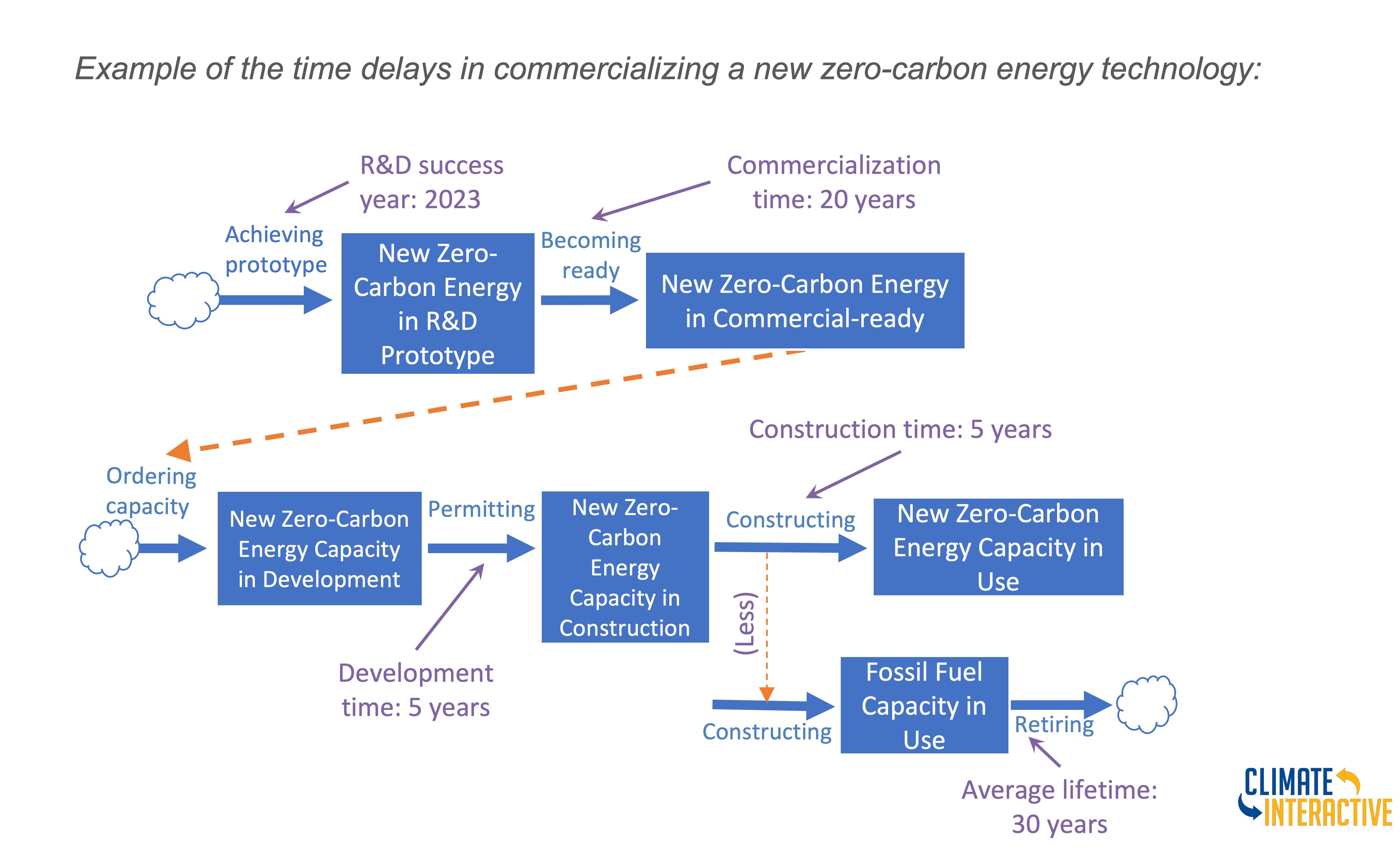 New Zero-Carbon🔗
New Zero-Carbon🔗
Discover a brand-new cheap source of electricity that does not emit greenhouse gases. Some speculate that such a breakthrough could be nuclear fusion, thorium thorium: A chemical element that can be used as fuel for nuclear fission, similar to uranium. Thorium fission is an experimental technology that has yet to be used in a large-scale nuclear reactor. Its use at a large scale could be modeled in En-ROADS using the New Zero-Carbon slider.-based nuclear fission, or small modular reactors (SMRs). However, there are unknown risks associated with any new energy supply. Decide when the breakthrough occurs, its initial cost relative to coal, and how long the delays in commercialization and scale up would be.
Note, this does not include new technologies in CO2 removal, transportation, electrification, or energy efficiency.
Examples🔗
- Research and development, or other investment into new sources of energy supply such as thorium thorium: A chemical element that can be used as fuel for nuclear fission, similar to uranium. Thorium fission is an experimental technology that has yet to be used in a large-scale nuclear reactor. Its use at a large scale could be modeled in En-ROADS using the New Zero-Carbon slider. fission, nuclear fusion, or small modular reactors (SMRs).
Big Messages🔗
The potential contribution of a new energy supply technology is severely hampered by the long amount of time it takes new technologies to scale up. Even under optimal conditions, it would take decades to displace fossil fuels, and actually reduce greenhouse gas emissions.
A new zero-carbon energy supply would compete with other low-carbon energy sources, diminishing some of its impact.
Key Dynamics🔗
Impact. Watch the orange area of New Zero-Carbon go up as a breakthrough in a new zero-carbon energy supply occurs in the “Global Sources of Primary Energy” graph. Notice that temperature drops only modestly.
Delays. It takes a long time for the new technology to grow and become a large part of the global energy mix. There is a long delay between discovery of the zero-carbon energy technology and its dominance in the market – 20 years to commercialize, several years to plan and build, and then growing only as existing coal and natural gas plants (which have a lifetime of 30 years) are retired. Watch how little Coal (brown area) and Natural Gas (dark blue area) go down before 2040. Because of this, very little carbon is kept underground during this critical period.
Price-Demand Feedback. The reason the new zero-carbon technology grows quickly is that it is cheaper than all other energy supplies, so the abundance of inexpensive energy increases demand to higher than it would be otherwise. View this in the “Total Final Consumption of Energy Sources” graph. Learn more.
Competition with renewables and nuclear. The new zero-carbon energy competes with all energy sources available, so notice also what happens to Renewables (green) and Nuclear (light blue) — they decrease. This is the “Crowding Out” dynamic.

Potential Co-Benefits of a Breakthrough in New Zero-Carbon🔗
- A breakthrough in a new energy source would create jobs along the supply chain from research and development to construction to operations.
- Research advancements in new technologies may be useful for other applications.
Equity Considerations🔗
- There are unknown consequences and risks associated with new energy sources, and oftentimes these technologies can end up being located in vulnerable communities.
Videos🔗
Slider Settings🔗
| status quo | breakthrough | huge breakthrough | |
|---|---|---|---|
| Breakthrough year | no breakthrough | current year | current year |
| Time to commercialize | 20 years | 20 years | |
| Initial cost relative to coal | 2 | 1 |
The "Initial cost relative to coal" slider adjusts the cost of the new zero-carbon energy source relative to the cost of coal. If the new zero-carbon energy is less than the cost of coal, demand will increase significantly, because it will be cost competitive with other energy sources. A value of "2" means that the initial cost of electricity from the new zero-carbon energy source in its breakthrough year is twice the marginal cost of electricity from coal in 2020.
Model Structure🔗
The path to deployment will take some time after the success of the technology in the laboratory: commercialization (set at 20 years); development, e.g., planning, financing, and permitting (5 years); and construction (5 years). Then the new energy source must compete with other energy sources.
Please visit support.climateinteractive.org for additional inquiries and support.
